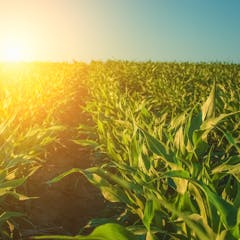
Articles on Food production
Displaying 61 - 80 of 88 articles

A recent summit in Ottawa on what’s known as agroecology has shown that more equitable and sustainable methods of producing food are not only possible, they’re beginning to spread around the world.

Food is not waste until it’s wasted.

Food systems must be transformed to produce more nutritious food with a lower environmental footprint.

The University of Melbourne is the first institution in Australia to have its nitrogen footprint calculated – it’s 139 tonnes per year, mainly because of food production, energy use and transport.

South Africa’s land reform debate must not lose sight of the real issue: how to provide enough food to feed its people.

Canadians are bargain-hunters when it comes to food, and so food manufacturers try to keep prices low. But does that mean they should engage in ‘shrinkflation?’

New research finds more CO₂ can actually make most plants smaller in the long-term - but the story for crops isn’t so simple.

Post-harvest management will reduce losses and improve food availability.

Multiple reports have convincingly demonstrated that agroecology is the most promising pathway to sustainable food systems on all continents. But governments aren’t doing enough to support it.

African countries, like Nigeria and Ethiopia, increased their food production using a system-wide approach, and not the traditional reliance on isolated projects.

Faced with a massive food production shortfall, Africa can look towards India’s Green Revolution to jump start its agricultural output.

Millions of Americans believe brown cows produce chocolate milk? The way the media reported this factoid raises questions about science literacy – but different ones than you may think.

Governments on the African continent must increase their investment in research and development so that science can yield self-sufficiency.

Climate change, rising food demand and globalization are putting pressure on world food production. New research explores the risk of failures in several of the world’s breadbasket regions at once.

Sydney, Melbourne and many other areas can expect to pay more for veg from next month, after widespread crop losses in Bowen, a major source of winter vegetables such as tomatoes, beans and capsicum.

Tilapia could play an important role in Tanzania’s economic development.

Many people are suspicious of GM crops, but new techniques could massively increase food production.

Australia’s deserts can be a harsh environment but plant life still survives there. So why not use them to develop the next generation of drought-resistant crops?

Over the past few years many companies have committed to sustainable palm oil. But that is threatened by a growing alliance between industry and government.

Fossil fuel emissions are slowing, but another major climate problem is becoming clear: food production.
